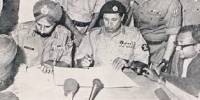VIOLENCE IN BANGLADESH
In criminal jurisprudence the wider interpretation of the term ‘custodial violence’ may include all kinds of physical and mental torture inflicted upon, or inhuman or degrading treatment given to, a person in police custody. It also includes death and torture in police lockups. While considering torture in police custody, the Supreme Court of India observed that “committed under the shield of uniform and authority in the four walls of a police station or lock-up, the victim being totally helpless” (D.K. Basu vs. State of West Bengal). In the same judgment the judges also stated “custodial torture is a naked violation of human dignity and degrading which destroys, to a very large extent, the individual personality.
It is a calculated assault on human dignity and whenever human dignity is wounded, civilization takes a step backward.” Eventually, the Supreme Court of India held that any form of torture or cruel, inhuman or degrading treatment would fall within the inhibition of the Constitutional provisions as to right to life and liberty of a person whenever it occurs during investigation, interrogation or otherwise.
The Constitution of Bangladesh also expressly prohibits torture and other forms of cruel and degrading treatment under Article 35(5). Several provision of the Cr.P.C call for judicial scrutiny by magistrates in the event of granting detentions and remand with a view to reducing if not eliminating custodial torture. Causing hurt to a person in order to extract confession, wrongful confinement voluntarily, causing grievous hurt, rape and murder are punishable offences under the Penal Code. Also, Article 35 provides that a person shall not be compelled to be witness against himself and Section 25 of the Evidence Act provides that an arrested person should not be coerced and intimidation to answer self-incriminating questions.
Allegedly, in Bangladesh, people are subjected to torture as a substitute for police investigations other than a number reason which include harassing and implicating innocent people through fabrication of cases, extortion and bribery, saving influential people and godfather of criminal activities, extracting statements that would ensure real perpetrators to go scot-free, for maintaining law and order as well as seeking revenge and settling the score by the rich and powerful. Violence in police custody varies from calling names, slapping, kicking, beating, sexual harassment and rape to most heinous instances like death. Keeping people in lock-up like animals, providing inadequate or no food or drink, keeping men, women, children together are also inhuman practice existing in police custody.
While any kind of torture is unacceptable to the civilized people, recent rise in death of people in police custody or during investigation has shocked every conscious being. In particular, extra-judicial killing of accused persons in crossfire has become a hot topic of discussion and is being strongly condemned by the civil society, rights groups and media. According to newspaper reports a total of 256 suspects were killed in crossfire since the inception of Rapid Action Battalion (RAB).
Despite relevant safeguards available under the Constitution, international Convention and procedural laws, the instance of torture in police custody have significantly increased in recent years.
Allegations against RAB
Torture of Joypurhat Bar Association Vice President
ASK investigation in April 2008 regarding allegation of torture on advocate Biman Chandra Basak, Vice President of the Joypurhat Bar Association, revealed that two persons in RAB uniforms, along with six or seven men in plainclothes, caught Biman at arund 3.00 am on 3 April, about 200 yard away from his house. They tortured him and interrogated him about two statues. They took him handcuffed in their microbus to a school ground, where the poured water into his mouth and nose. As villagers gathered to protect Biman, the attackers, who introduced themselves as RAB members, threatened the villagers. After about an hour of torture, they left the place and Biman was admitted in Joypurhat hospital with severe injuries including a fractured leg. The commander of the Joypurhat RAB camp claimed that no one from his unit was involved in the incident. He mentioned that the Bogra RAB camp may have conducted the operation. Later, he claimed that the attackers were not members of RAB at all. Although Biman said he could identify the perpetrators, there was no report to date of any such identification having been made, or of any further inquiry into the matter.
High court orders RAB to produce detainee
The High Court on 26 October 2008 asked RAB to explain in three weeks why it should not be ordered to produce Hasan Khan, Whom it had allegedly detained on 25 May 2008 and whose whereabouts were since unknown.The court passed the order after hearing a writ petition filed by ASK and Hasan’s wife Hasi Begum. ASK’s investigations indicated that a RAB team had arrested Hasan Khan of Dattapara, Tongi on 25 May 2008, when he, and his wife Hasi, were returning home after his appearance in a criminal case in Gazipur court. The RAB personnel gave no reason for the arrest, Hasi followed the microbus that took her husband towards the RAB office at Uttara. She was denied access to the office. ASK wrote to the DG RAB seeking information on Hasan’s whereabouts, but since they received no response, a PIL was filed by ASK.
Allegations of Babul’s torture by RAB
Mohammad Babul (30 years), a cloth trader, of Ispahani area in Aganagar of Dakhin keraniganj in Dhaka, on his way to Kaliganj, on 24 July, to collect dues from one of his customers, was suddenly arrested by a team of RAB-10 unit, blindfolded and driven away in a microbus. After some time, the black cloth was removed.
Babul was admitted to Dhaka Medical College Hospital, where he told journalists that he was taken to an empty field in Postogola, where “they tried to tie me down, I resisted. The RAB men fired blank shots and shouted, ‘the terrorist is fleeing. Catch him. Shoot him’.” “One of them stood on my chest and started beating me. All the time they were asking me to give them the firearms. One of them said, ‘Shoot him in the leg.’ I was shot on the right leg. I screamed in pain. Another said, ‘Shoot him again’ and I was shot again in my leg. I was praying to Allah all the time for my life”
In RAB’s version of events, after they arrested him on 25 July (not 24 July as Babul claims) and accompanied him to recover a cache of firearms, his “accomplices” fired on them. When Babul tried to flee during the gunfight he received bullet injuries. The RAB-10 commanding officer SM Kamal Hossain, accused him of being “a criminal in the guise of a clothes trader,” running a syndicate of brand forgers and selling counterfeit clothes. Babul admitted that he had been earlier implicated in a fraud case but denied any other involvement in crime. This was confirmed by the Kotwali thana police Officer in Charge Abdul Hannan who commented that Babul “is not on the list of criminals, let alone being a top criminal.”
Parents demand investigation into son’s death in RAB “crossfire”
Mosharaf Hossain Sentu (28 years), who had come from Korea, and his friend Rezaul Karim (27 years), a salesperson, were allegedly killed in “crossfire” by a team of RAB-10 on 14 July 2008 at Shyampur. At a press conference on 28 July, the parents of both men stated that a plainclothes team of RAB-10, instigated by some local drug-peddlers and land-grabbers, had picked their sons up on 12 July 2008 from near their residences. They contacted RAB-10’s office, but RAB denied arresting them.
After being informed by local people of their sons’ deaths on 12 July 2008, the parents again went to the RAB office at night. They were told to contact the Shyampur police station. The parents claimed that there were no criminal records against their sons, and that their work with the local community to combat crime had resulted in their facing such reprisals. They appealed to the authorities including the Director-General of RAB to conduct a proper investigation and ensure punishment of the guilty. There is no information of any such investigation having been held to date.
The following allegation of custodial torture by RAB has also been reported, without any clear information as to action taken in respect of each incident:
On 22 May 2008, Habibullah (10), who worked at the residential quarters inside the RAB-10 camp at Lalbagh, Dhaka, was found dead with marks of injury on his body.
On 18 March 2008, Md. Afzal Khan (21), of village Binodpur, Charekandi, District Shariatpur, was arrested by a team of the RAB-8, and died in Dhaka Medical College Hospital on 20 March. His father Abdur Rahman, a retired subedar of the Bangladesh Army said that on 21 March, on collection Afzal’s body from the DMCH morgue he found multiple injury marks. There were wounds on the left side of the forehead, on the cheeks, lips, gums and the rear end of the Skull. Afzal’s neck was also broken on the left side. His stomach was inflated; the veins of his legs had been slit and bore blood stains.
Allegations against police
Several allegations of police torture reported in 2008 included the following:
On 16 March 2008, a bakery worker, Nazrul Islam, was allegedly beaten and his leg fractured by Quamrul Islam, Officer-in-Charge of Srinagar police station in Munshiganj, because he bathed in the police station pond.
On 17 March 2008 at around 3:00 am Munsur Ali (45years), of Nayapara village of Saturia in Manikganj, and his daughter Rahima Akter, a college student, were allegedly tortured by policemen who accused them of abetting a man to escape arrest.No case was filed in either incident.
Custodial rape
An incident of custodial rape was recorded by the police in Rajshahi on 9 October against an Assistant Sub-Inspector (ASI) of Boalia Police Station on charges of raping a field worker of an insurance company. According to the FIR, ASI Faruk used to harass the victim over phone and one afternoon he took ASI Abdul Hamid to the victim’s house. The victim lived with her mother. The rapist threatened the victim saying that he is a policeman and raped her. Later, the victim narrated the incident to her mother who with the help of a person named Alam admitted her to the One Stop Crisis Center (OCC). ASI Abdul Hamid and Faruk who were named in the first information report went into hiding after filing of the case.
In Blast and Others v.Bangladesh and Others Supreme Court’s directives and guidelines relating to torture and custodial violence to the government are described below:
1) No police officer shall arrest a person under section 54 of the Code for the purpose of detaining him under section 3 of the Special Power Act, 1974
2) A police officer shall disclose his identity and, if demanded, shall show his identity card to the person arrested and to the person present at the time of arrest.
3) He shall record the reasons for the arrest and other particulars as mentioned in recommendation A(3)(b) in a separate register till a special diary is prescribed.
4) If he finds, any marks of injury on the person arrested, he shall record the reasons for such injury and shall take the person to the nearest hospital or Government doctor for treatment and shall obtain a certificate from the attending doctor.
5) He shall furnish the reasons for arrest to the person arrested within three hours of bringing him to the police station.
6) If the person is not arrested from his residence or place of business, he shall inform the nearest relation of the person over phone, if any or through messenger within one hour of bringing him to the police station.
7) He shall allow the person arrested to consult a lawyer of his choice if he so desires or to meet any of his nearest relations.
8) If the magistrate is satisfied on consideration of the reasons stated in the forwarding letter as to whether the accusation or the information is well founded and that there are materials in the case diary for detaining the person in custody, the magistrate shall pass an order for further detention in jail. Otherwise, he shall release the person forthwith.
9) If the magistrate authorizes detention in police custody, he shall follow the recommendations contained in recommendation B(2)(c)(d) and B(3)(c)(d).
10) The police officer of the police station who arrests a person under section 54 or the Investigation Officer who takes a person in police custody or the jail, as the case may be, shall at once inform the nearest magistrate as recommendation B(3)(e) of the death of any person who dies in custody.
















